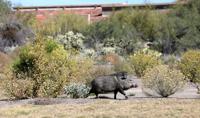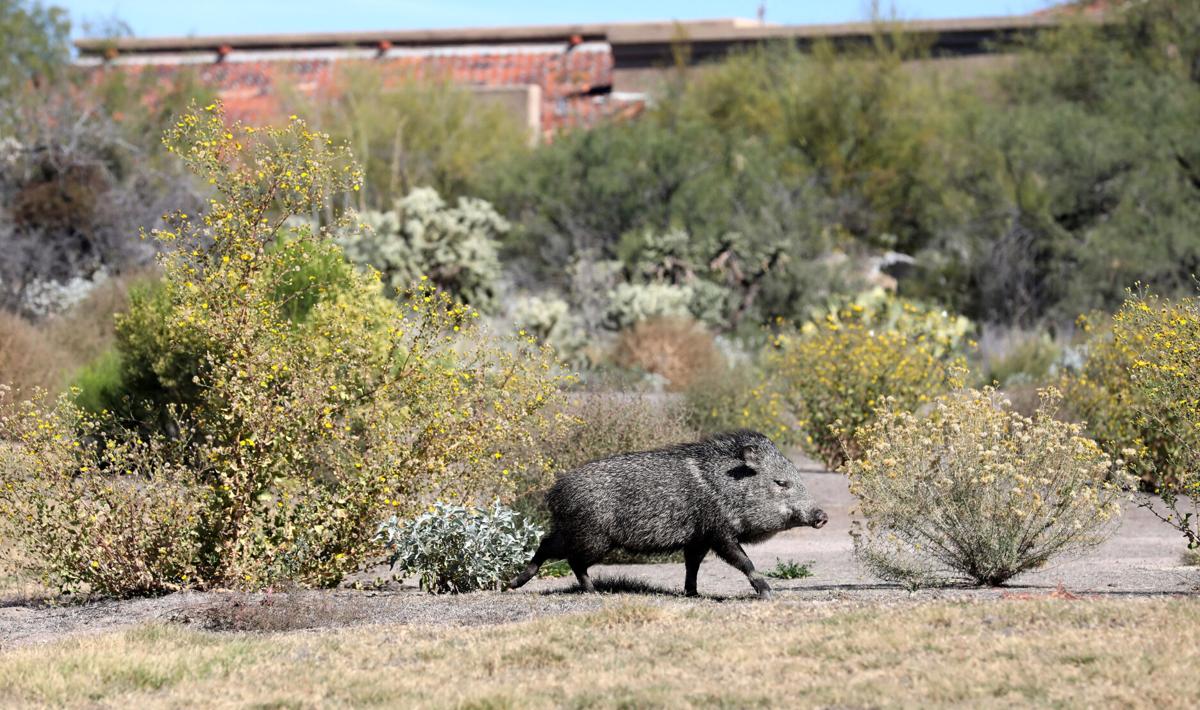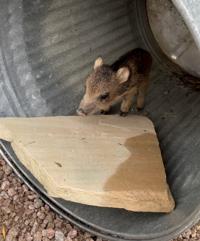State wildlife officials are warning people to be cautious around javelinas after two people were bitten in the Tucson area over the weekend, including an 11-year-old girl who was treated for minor injuries at a local hospital.
Both attacks occurred while people were walking their dogs.
Arizona Game and Fish Department spokesman Mark Hart said javelinas are not normally aggressive toward people, but they will react instinctively to perceived threats.
“They have a keen sense of smell, but they don’t see very well,” he said. “They can’t distinguish the difference between a dog and a coyote, and a coyote is a natural enemy.”
Hart said the 11-year-old girl and her mother were walking their dog on Table Mountain Road, north of Campbell Avenue and Skyline Drive, at about 8 p.m. Sunday, when they encountered a pair of javelinas.
He said the woman and the girl did “exactly what we tell people to do — they turned around and went the other way. Unfortunately, they encountered six more” javelinas.
The girl fell to the ground and was bitten seven times. Hart said she was taken to the children’s hospital at Banner-University Medical Center, where she received antibiotics and a precautionary rabies treatment before being released.
The incident came two days after a woman and her dog were attacked from behind by a javelina at their apartment complex on La Cholla Boulevard near Magee Road on Friday night.
Hart said the javelina left the woman with a 2-inch gash on her thigh and her dog with a leg wound, both of which required treatment but no hospitalization.
The woman posted about what happened to her on a public Facebook group and reported the incident to the Game and Fish Department.
Hart said rabies is not suspected in either incident, and wildlife officials have no plans to remove any javelinas from the two neighborhoods.
Fun fact: Javelina have a scent gland on the top of their rump that they rub on rocks and tree stumps to mark their territory. They're also (unofficially) the cuties of the desert. Video by Henry Brean, Arizona Daily Star
Rounding up and relocating the animals rarely makes much difference, he said, since other javelinas will just move in behind them, especially if there is something there to attract them.
Hart said wildlife officials suspect someone in the neighborhood along Table Mountain Road is leaving out food for the javelinas. That can create dangerous conditions for both people and animals, he said.
It’s also illegal in Pima, Maricopa and Pinal counties, where violations can result in fines of up to $300.
Hart said people can call 1-800-352-0700 to report illegal feeding or other wildlife crimes. For any other wildlife-related assistance, the number to call is 623-236-7201, he said.
According to the Arizona-Sonora Desert Museum, adult javelinas are about 2 feet tall, 3 to 4 feet long and can weigh up to 55 pounds. Also known as collared peccaries, they have pig-like snouts and long, sharp canine teeth that make them resemble wild boars, but they are not pigs.
Fun fact: Javelina have a scent gland on the top of their rump that they rub on rocks and tree stumps to mark their territory. They're also (unofficially) the cuties of the desert. Video by Henry Brean, Arizona Daily Star
They generally live in large family groups, and, like a lot of animals, they are protective of their young.
If you see javelinas when you’re walking a dog, do not approach them, Hart said. Turn around and go the opposite direction.
Javelinas are not inherently dangerous or something to be feared, he said, but “you should always be cautious around any wild animals.”
For Star subscribers: After rescuing the baby javelinas — known as "reds" because of their youthful, auburn hair — a Tucson couple is seeking changes to in-ground garbage bins that attract and trap wildlife.
For Star subscribers: Residents and researchers are learning a lot as they follow a GPS-collared bobcat and her kittens through a gated community on the west side of Tucson.







